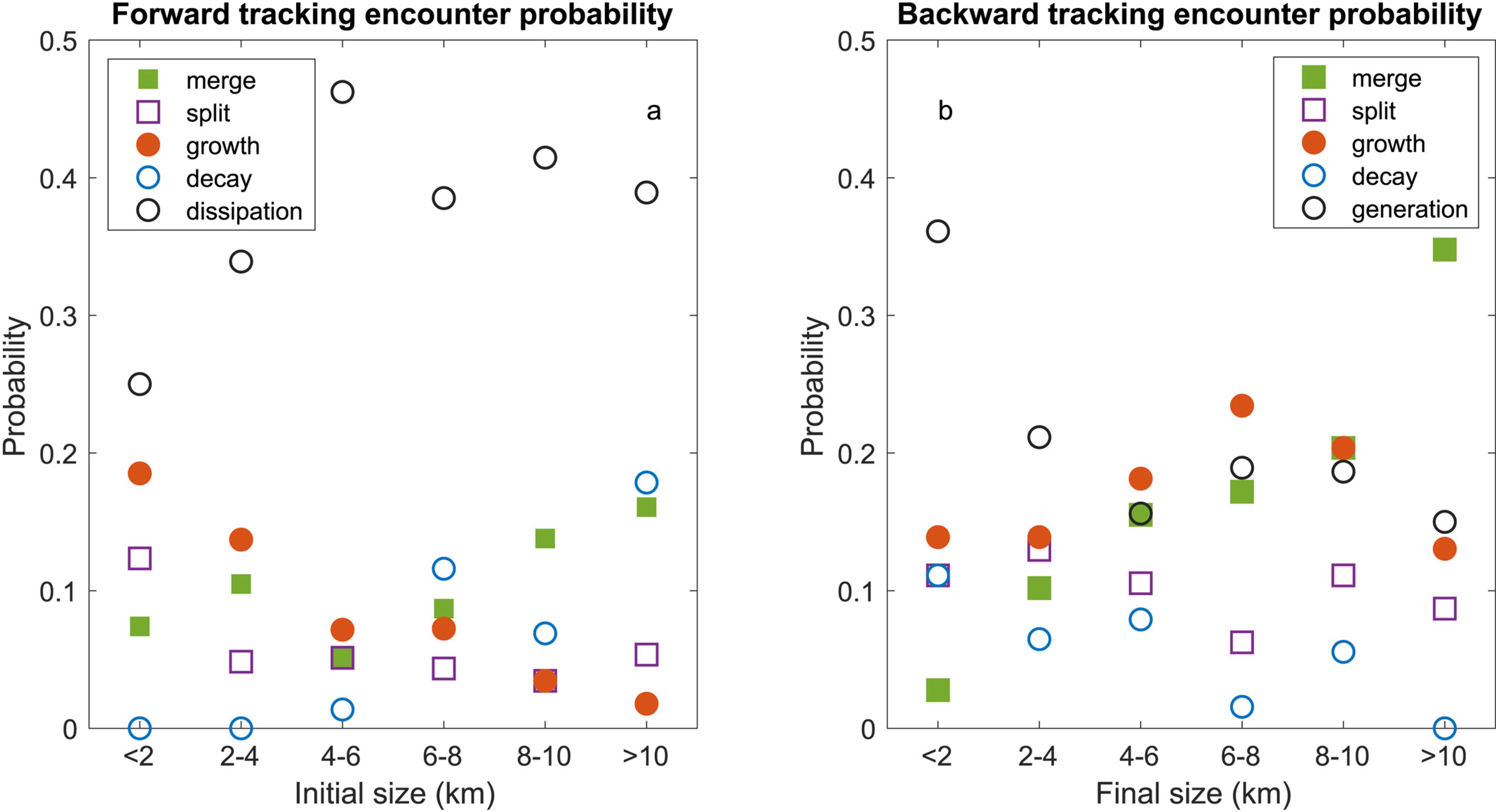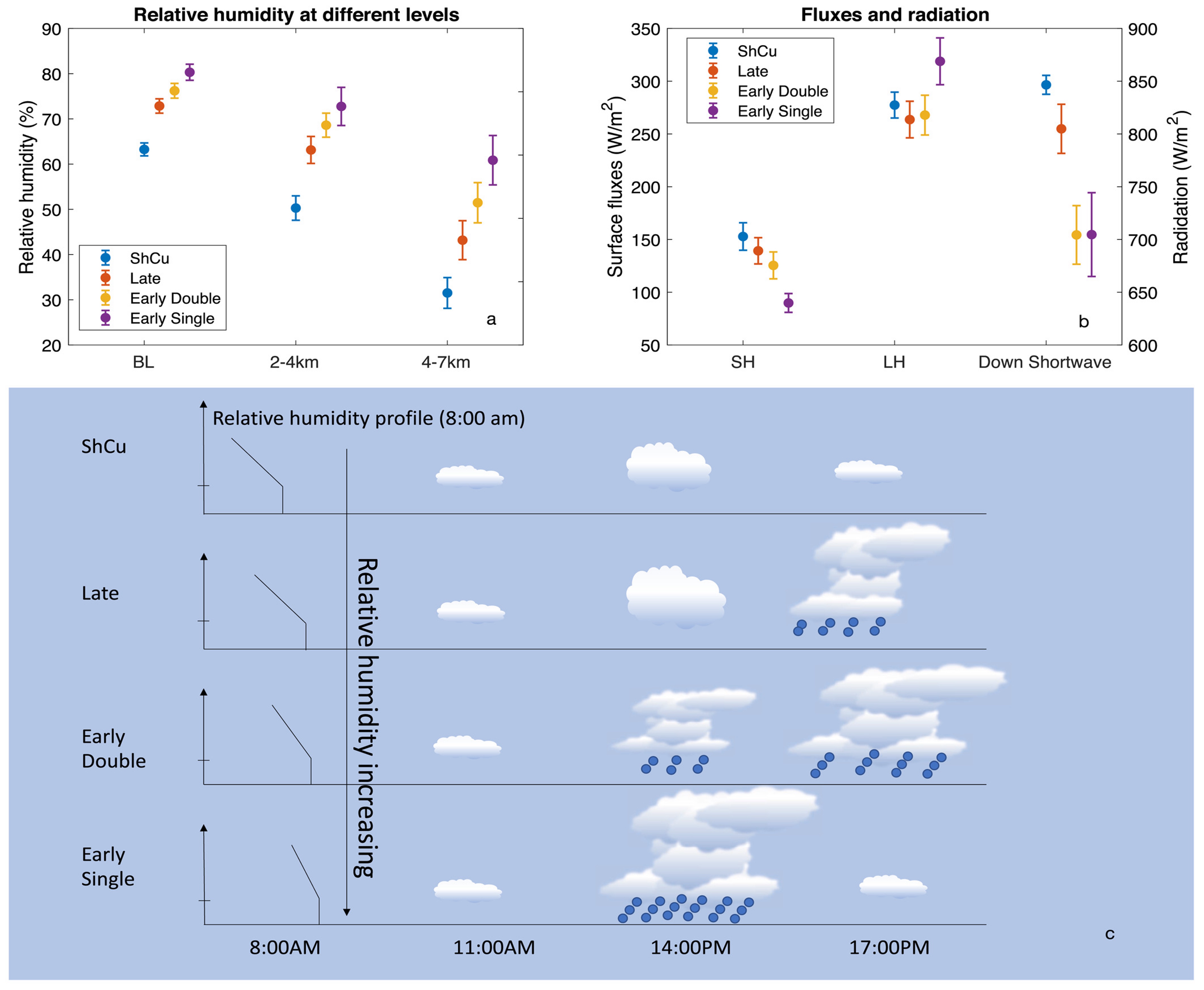What determines the number and the timing of pulses in afternoon precipitation over the Amazon?
Submitter
Zhang, Yunyan — Lawrence Livermore National Laboratory
Area of research
Cloud Processes
Journal Reference
Science
Diurnal cycle, one of the dominant modes of tropical convective variability, is closely tied to the global energy budget and water cycle. Using data from the GoAmazon field campaign, we focus on double pulses of the afternoon precipitation produced by surface-forced local convection. This work reveals that 1) free troposphere relative humidity is important in determining both the onset timing and the number of pulses of afternoon precipitation; and 2) natural selection of clusters more favorable for convective development and the interactions among convective clusters contribute to a second precipitation pulse.
Impact
We investigate double-pulse events of afternoon precipitation for the first time using GoAmazon observations. This study presents evidence of the existence of such phenomenon, develops algorithms to explicitly track the evolution of convective clusters, and reveals the importance of convective cluster interactions in determining the number of precipitation pulses. This study also shows an interesting relationship between early-morning relative humidity, surface fluxes, and the types of daytime local convection, and provides physical explanations of this relationship. These observational findings improve our understanding of the evolution and aggregation of convective clusters and can be used to develop process-orientated diagnostics for the assessment of model performance.
Summary
Using observational data from the 2014/15 GoAmazon field campaign, this work addresses an interesting phenomenon in the diurnal cycle of precipitation over tropical rainforests: on locally generated deep convection days, two precipitation pulses (usually 2 hours apart) are often observed in the afternoon, which is rarely discussed in previous studies. This work focuses on a mechanistic understanding of the controlling factors of this local double-pulse precipitation phenomenon. We first categorize locally generated deep convection days into early- versus late-precipitation-onset days determined by the timing of first precipitation pulse. A detailed tracking algorithm that records the cluster behaviors is then used to explicitly attribute the relative contributions of different behaviors to the second precipitation pulse. On the early-onset days with a single precipitation pulse, the precipitation cores are more protected from entrainment drying due to a much moister early morning environment, so thus penetrate to a much higher level than 7 km and precipitate more heavily. After heavy precipitation, the atmosphere becomes strongly stabilized and prohibits the further development of convective clusters: therefore only one pulse occurs during these days. On the first pulse of the early-onset days with double pulses, a larger percentage of precipitation comes from the shallow and congestus clouds, and less from deep precipitating cores when compared to single-pulse days. With weaker and shallower precipitation, the atmosphere remains less stable. In addition, the formation and dissipation of shallow and congestus clouds can probably contribute to a gradual moistening of the lower and middle troposphere, which favors the further development of deeper convection. After the first precipitation pulse, in addition to the natural growth of the existing convective clusters, aggregation among these clusters helps form even larger and deeper clusters, which leads to a second precipitation pulse that is stronger than the first pulse. In our study, a tight positive relationship is observed between early-morning mid-level relative humidity and the precipitation onset timing as well as the number of pulses during daytime, whereas sensible fluxes show an opposite response. The results here confirm that the interaction among different convective clusters and the early morning free troposphere humidity can be important in influencing precipitation characteristics, and therefore should be accounted for in the future convective scheme development.



